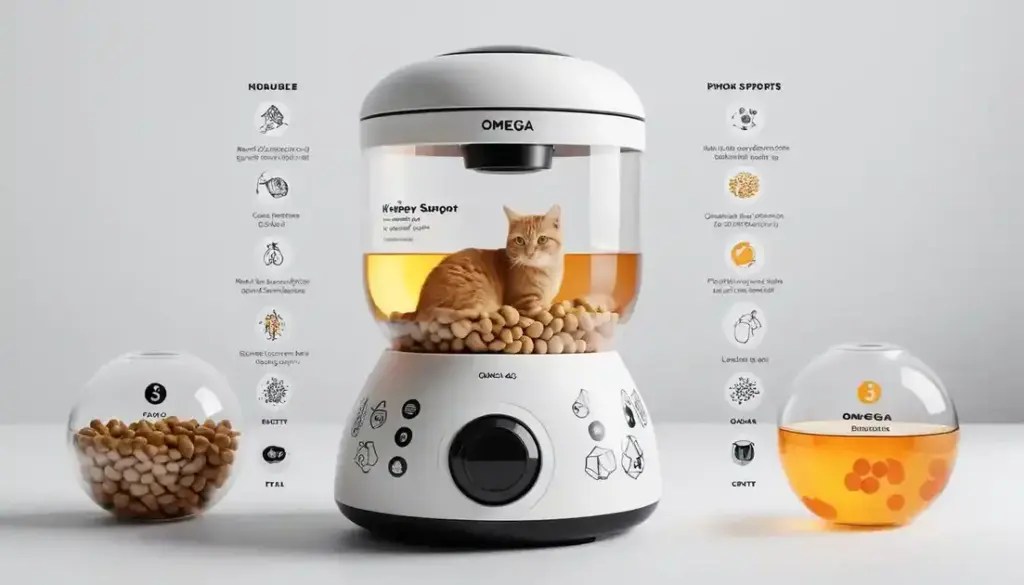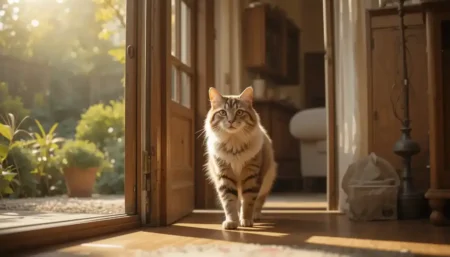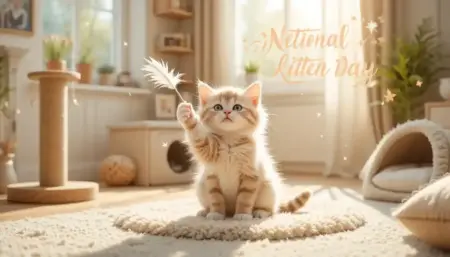The best diets for cats with kidney disease are low‑phosphorus, moderate‑protein, moisture‑rich therapeutic foods that also supply omega‑3 fatty acids and balanced electrolytes.
These formulas ease the workload on failing kidneys, help control blood pressure, and keep cats hydrated—key factors for slowing disease progression and preserving quality of life.
In the sections below, you’ll learn why nutrition matters, how to read pet‑food labels, which commercial and homemade options work best, and practical tips for feeding, hydrating, and monitoring your senior feline.
Understanding Kidney Disease in Cats
Kidney disease, officially called chronic kidney disease (CKD), is one of the most common ailments in senior cats. It gradually reduces the kidneys’ ability to filter waste, balance fluids, and regulate minerals.
Early dietary intervention can slow this decline and keep your cat comfortable for years.
What Causes CKD in Cats?
- Age – Risk climbs sharply after 10 years.
- Dental disease – Chronic inflammation from periodontal problems can damage the kidneys.
- Dehydration – Even brief fluid deficits (e.g., after anesthesia) strain renal tissue.
- Toxins & infections – Certain drugs, pesticides, FIV, and feline leukemia virus (FeLV) increase risk.
Recognizing Early Signs
- Increased thirst and urination
- Subtle weight loss
- Lethargy or reduced playfulness
- Dull coat, bad breath, or a slight change in appetite
When unnoticed, CKD can progress silently; up to 75 % of kidney function may be lost before obvious signs appear.
Why Early Nutrition Matters
Nutrition is the only modifiable factor that directly influences kidney workload. Targeted feeding can:
- Lower blood phosphorus and reduce mineral deposits.
- Provide high‑quality protein that minimizes waste.
- Increase moisture intake, preventing dehydration.
- Supply omega‑3 fatty acids that curb inflammation.
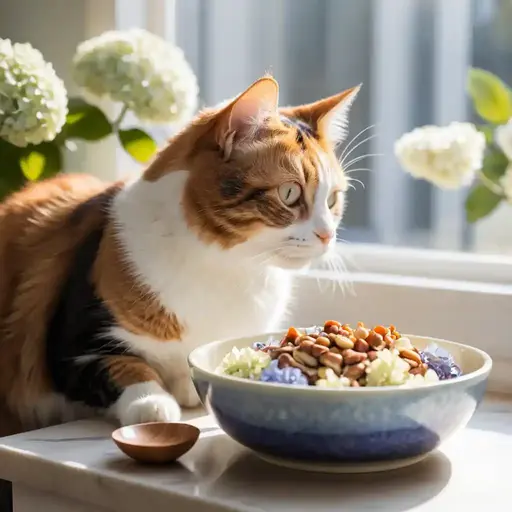
Why Diet Is the Cornerstone of CKD Management
A renal‑support diet isn’t a luxury—it’s a medical‑grade intervention. Research shows that cats on therapeutic foods live, on average, 6‑12 months longer than those on standard kibble alone.
Key dietary strategies include:
- Phosphorus restriction – Limits kidney damage from mineral overload.
- Protein moderation with high digestibility – Reduces nitrogen waste while preserving lean muscle.
- Sodium control – Helps maintain healthy blood pressure.
- Potassium balancing – Prevents muscle weakness and cardiac issues.
- Omega‑3 enrichment – EPA and DHA dampen renal inflammation.
Each component works together to keep toxins low, blood pressure stable, and the cat’s overall energy up.
Key Nutrients for Kidney‑Friendly Feeding
When selecting the best diets for cats with kidney disease, focus on the four pillars that research consistently highlights: protein, phosphorus, sodium, and omega‑3 fatty acids.
Protein Quality & Quantity
- Goal: 28–35 % protein on a dry‑matter basis (DM).
- Why: High‑quality sources (chicken, turkey, egg) are easily digested, producing less nitrogen waste.
Phosphorus Control
- Goal: ≤ 0.5 % phosphorus DM (ideally 0.3–0.4 %).
- Why: Excess phosphorus accelerates nephron loss and leads to secondary hyperparathyroidism.
Sodium Management
- Goal: ≤ 0.3 % sodium DM.
- Why: Reduces hypertension, a common comorbidity in CKD cats.
Potassium Balance
- Goal: Adequate, but not excessive (usually 0.5–0.8 % DM).
- Why: CKD often causes hypokalemia, causing weakness and arrhythmias.
Omega‑3 Fatty Acids (EPA + DHA)
- Goal: 40 mg EPA + 25 mg DHA per kg body weight daily (≈ 500 mg combined per 5 kg cat).
- Why: Anti‑inflammatory properties help preserve renal function.
Nutrient Target Summary
| Nutrient | Desired Range (Dry Matter) | Primary Reason |
|---|---|---|
| Protein (high‑quality) | 28–35 % | Maintains muscle, reduces nitrogen waste |
| Phosphorus | 0.30–0.50 % | Slows nephron loss |
| Sodium | ≤ 0.30 % | Controls blood pressure |
| Potassium | 0.5–0.8 % | Prevents hypokalemia |
| EPA + DHA | 40 mg / kg EPA + 25 mg / kg DHA | Anti‑inflammatory, slows CKD progression |
| Moisture (wet food) | 70–80 % | Enhances hydration, flushes toxins |
Commercial Renal Diets – Comparative Review
Commercial therapeutic diets are formulated to meet the nutrient targets above while offering palatability that encourages consistent intake.
Below is a side‑by‑side comparison of the most widely recommended products.
| Brand & Product | Protein (DM) | Phosphorus (DM) | Sodium (DM) | Forms | Key Additives | Pros | Cons |
|---|---|---|---|---|---|---|---|
| Royal Canin Renal Support | 30 % | 0.38 % | 0.22 % | Wet & dry | EPA/DHA, antioxidants | Very palatable, multiple flavors | Higher price point |
| Hill’s Prescription Diet k/d | 31 % | 0.37 % | 0.27 % | Wet & dry | Omega‑3, omega‑6 balance | Vet‑recommended, widely available | Some cats dislike texture |
| Purina Pro Plan Veterinary Diets NF (Renal Formula) | 29 % | 0.40 % | 0.28 % | Wet & dry | Vitamin E, taurine | Affordable, good for picky eaters | Limited flavor variety |
| Blue Buffalo Natural Veterinary Diet KS | 32 % | 0.42 % | 0.25 % | Wet only | L‑carnitine, omega‑3 | Grain‑free, high‑quality ingredients | Wet only may be pricey for large cats |
| Iams Veterinary Renal Health | 28 % | 0.45 % | 0.30 % | Dry only | Added vitamin C | Easy to store, lower cost | Dry form may reduce moisture intake |
How to Choose the Right One:
- Palatability – Cats with CKD often have reduced appetite; flavor and texture matter most.
- Form – Wet food provides crucial moisture; supplement dry kibble with canned meals if you need calorie density.
- Cost & Availability – Consider long‑term affordability; many vets will prescribe the most appropriate option for your budget.
- Veterinary Recommendation – A vet familiar with your cat’s lab values can fine‑tune the choice.
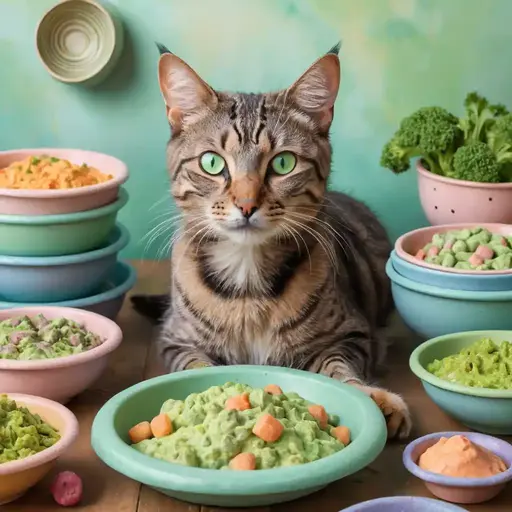
Choosing the Right Diet for Your Cat’s Lifestyle
Even the most perfectly balanced renal formula won’t help if it doesn’t fit your cat’s daily routine. Evaluate the following factors before committing to a brand:
- Feeding Schedule – If you’re away during the day, a dry renal diet may be less messy, but pair it with a water fountain to boost hydration.
- Weight Management – Overweight cats need calorie‑controlled portions; underweight cats may require a higher‑calorie renal formula or added supplements.
- Allergies & Sensitivities – Some cats react to poultry or fish proteins; hypoallergenic renal diets (e.g., hydrolyzed protein) are available.
- Multiple‑Cat Households – If only one cat needs renal support, feed separate meals to avoid cross‑contamination.
By aligning the diet with your cat’s habits, you improve acceptance and consistency—two pillars of successful CKD management.
Homemade Renal Diets – How to Do It Safely
Homemade meals give you total control over ingredient quality, but they require strict veterinary oversight to avoid nutrient imbalances that could worsen kidney disease.
Guidelines for Safe Homemade CKD Meals
- Get a Vet‑Approved Formula – Work with a board‑certified veterinary nutritionist to design a recipe that meets protein, phosphorus, and sodium targets.
- Follow the 80/10/10 Rule – 80 % lean muscle meat, 10 % bone (for calcium), 10 % low‑phosphorus organ meat (e.g., heart).
- Use Low‑Phosphorus Ingredients – Avoid bone‑in meats, organ meats like liver, and dairy that raise phosphorus.
- Add Essential Supplements – Taurine, calcium (if bone is limited), omega‑3 fish oil, and a balanced vitamin‑mineral premix.
- Ensure Proper Moisture – Blend with low‑sodium chicken broth or water to achieve 70–80 % moisture.
Sample Recipe: Gentle Chicken & Pumpkin Blend
| Ingredient | Amount | Reason |
|---|---|---|
| Ground chicken (lean, skinless) | 1 cup | High‑quality, low‑phosphorus protein |
| Cooked white rice | ½ cup | Easily digestible carbohydrate |
| Steamed pumpkin (plain) | ¼ cup | Low phosphorus, adds fiber and moisture |
| Fish oil (EPA/DHA) | 1 tsp | Anti‑inflammatory omega‑3 |
| Taurine powder | ½ tsp | Essential for heart & retinal health |
| Low‑sodium chicken broth | ¼ cup | Boosts flavor & hydration |
Instructions
- Cook chicken thoroughly; no seasoning.
- Boil rice until soft, then mix with pumpkin and broth.
- Stir in fish oil and taurine; let cool to room temperature.
- Serve in 2–3 small meals daily; refrigerate leftovers ≤ 24 h.
Common Pitfalls to Avoid
- Excess Phosphorus: Adding bone‑in meat, fish with bones, or organ meats like liver spikes phosphorus.
- Missing Taurine: Homemade diets often lack sufficient taurine, leading to heart issues.
- Inaccurate Portion Sizes: Use a kitchen scale and a vet‑calculated calorie target.
- Unbalanced Electrolytes: Do not guess potassium or sodium levels; a premix is essential.
If you’re uncertain about any step, stick to a commercially formulated renal diet. Homemade meals are best for cats with specific dietary sensitivities or picky eating habits.

Hydration Strategies for Cats with CKD
Dehydration accelerates toxin buildup and worsens kidney function. Because cats naturally have a low thirst drive, proactive hydration is essential.
Proven Tactics
- Wet Food Dominance – Offer at least one canned meal per day; aim for 70–80 % moisture.
- Broth Boosters – Add a spoonful of unsalted chicken or fish broth to dry kibble or wet food.
- Cat Water Fountains – Flowing water encourages licking; many cats drink up to 50 % more from fountains.
- Multiple Water Stations – Place a bowl or fountain in several quiet locations; cats may drink more when the source is nearby.
- Room‑Temperature Liquids – Cats often reject cold water; serve at room temperature for better palatability.
- Flavor Enhancers (Vet‑Approved) – A drop of tuna juice (no added salt) or a sprinkle of powdered kelp can spark interest.
What to Avoid
- High‑Sodium Broths or Treats – Can cause fluid retention and hypertension.
- Force‑Feeding Fluids – Only use syringe feeding when directed by a vet.
- Stale Water – Replace water daily; stale water deters drinking.
By integrating these habits, you’ll supply the fluid your cat’s kidneys need without relying solely on a water bowl.
Supplements and Therapies – Use With Caution
Supplements can fill gaps left by diet, but they must be introduced under veterinary supervision to avoid adverse interactions.
| Supplement | Typical Dose (per kg) | Primary Benefit | Key Caution |
|---|---|---|---|
| Omega‑3 (Fish Oil/Algae) | 40 mg EPA + 25 mg DHA | Reduces inflammation, slows CKD progression | Excess may cause diarrhea; use vet‑grade product |
| Phosphate Binders (Aluminum hydroxide, Lanthanum carbonate) | 0.5 g per meal | Limits phosphorus absorption | Must be given with each meal; monitor blood phosphorus |
| Potassium Chloride (Oral gel) | 0.2–0.5 mEq/kg q24h | Treats hypokalemia, improves muscle tone | Over‑supplementation can cause cardiac arrhythmias |
| Calcitriol (Active Vitamin D) | 0.1 µg per 5 kg q48h | Supports calcium absorption, bone health | Requires regular blood calcium monitoring |
| Recombinant Erythropoietin (EPO) | Dose varies (vet‑prescribed) | Stimulates red‑blood‑cell production for anemia | Long‑term use may lead to antibodies; monitor PCV |
Best Practices
- Vet Confirmation – Always confirm the need with blood work.
- Start Low, Go Slow – Introduce one supplement at a time, watching for gastrointestinal upset.
- Track Interactions – Phosphate binders can reduce absorption of other oral meds; space dosing by at least 30 minutes.
- Quality Assurance – Choose products labeled “vet approved” or “pharmacy grade” to avoid toxic additives.
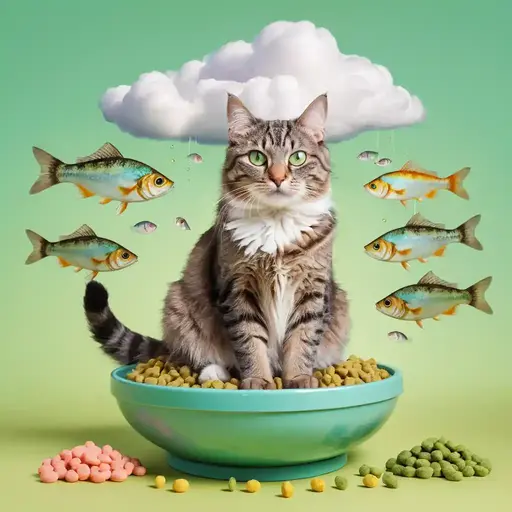
Monitoring Your Cat’s Health & Adjusting the Diet
CKD management is a dynamic process. Regular monitoring ensures the diet remains effective as the disease evolves.
Key Health Metrics
- Weight – Weigh weekly; aim for less than 5 % loss per month.
- Hydration Status – Check skin elasticity on the scruff and moisture of gums.
- Appetite & Activity – Note any sudden drop in food intake or playfulness.
- Blood Work – Every 3–6 months: BUN, creatinine, phosphorus, potassium, calcium, and SDMA.
- Urinalysis – Evaluates specific gravity and proteinuria.
When to Adjust the Diet
| Situation | Recommended Adjustment |
|---|---|
| Weight loss despite adequate calories | Increase calorie density (add a small amount of healthy oil or a higher‑calorie renal formula). |
| Phosphorus rising above target | Switch to a stricter low‑phosphorus diet, add phosphate binder, or reduce phosphorus‑rich treats. |
| Persistent dehydration | Switch to a stricter low‑phosphorus diet, add a phosphate binder, or reduce phosphorus‑rich treats. |
| Elevated potassium (hyperkalemia) | Reduce potassium‑rich supplements; choose a renal diet with lower potassium. |
| Anemia (low PCV/HCT) | Discuss EPO therapy and evaluate iron status; ensure diet provides adequate iron and B‑vitamins. |
Keeping a simple log (paper or app) of these metrics helps your vet spot trends early, allowing timely diet tweaks.
Transitioning to a Renal Diet
Cats are creatures of habit; abrupt changes can cause stress and appetite loss. Follow a proven step‑wise transition to maximize acceptance.
7‑Day Transition Plan
| Day | Mix Ratio (Old : New) | Tips |
|---|---|---|
| 1–2 | 75 % old, 25 % renal | Warm the new food slightly (30 °C) to boost aroma. |
| 3–4 | 50 % old, 50 % renal | Add a splash of low‑sodium broth for extra flavor. |
| 5–6 | 25 % old, 75 % renal | Offer in a shallow dish to reduce whisker fatigue. |
| 7 | 100 % renal | Serve at room temperature; observe for any gastrointestinal upset. |
Boosting Appeal for Picky Eaters
- Warm the food – Heat releases volatile compounds cats love.
- Top with a drizzle – A teaspoon of fish oil or a pinch of powdered brewer’s yeast can entice.
- Rotate textures – Some cats prefer pâté, others sliced chunks; experiment within the same brand.
If Refusal Persists
- Decrease the transition interval – Extend each stage to 3–4 days.
- Hand‑feed small morsels – A gentle approach can coax curiosity.
- Consult your vet – Persistent anorexia may require appetite stimulants (e.g., mirtazapine) or an alternative formula.
Myths & Facts About Renal Nutrition
| Myth | Fact |
|---|---|
| “If my cat feels fine, I don’t need a special diet.” | CKD often progresses silently; early dietary changes can delay overt symptoms by months. |
| “Low‑protein = starving my cat.” | Renal diets use high‑quality protein in moderate amounts, preserving muscle while cutting waste. |
| “Homemade meals are always safer.” | Without precise nutrient calculations, they can supply excess phosphorus or insufficient taurine, worsening CKD. |
| “Cats will drink enough water on their own.” | Cats have a low innate thirst drive; wet food and water fountains are essential for adequate hydration. |
| “All renal diets are the same.” | Formulations differ in protein source, phosphorus binders, and added supplements; choosing the right one matters. |
Understanding these truths helps you make evidence‑based decisions rather than relying on popular anecdotes.
FAQs
How quickly should I switch my cat to a renal diet?
Ideally, transition over 7–10 days using the gradual mix method above. A slow change reduces stress and encourages consistent eating.
Can my cat eat both wet and dry renal food?
Yes. Combining wet (for hydration) with a small portion of dry (for convenience) works well, provided the total daily intake meets the renal nutrient targets.
Are there any human foods safe for cats with renal disease?
Some low‑phosphorus human foods—like plain cooked chicken breast or pumpkin—can be added in small amounts, but always consult your vet to avoid hidden sodium or phosphorus.
My cat refuses the therapeutic food. What next?
Try warming the food, adding a small amount of low‑sodium broth, or rotating flavors. If refusal continues beyond two weeks, discuss alternative formulas or prescription appetite stimulants with your vet.
How often should I have my cat’s blood work rechecked?
Every 3–6 months for stable CKD; more frequently (every 1–2 months) if the disease is progressing rapidly or if you adjust the diet.
Conclusion
Choosing the best diets for cats with kidney disease means selecting low-phosphorus, moderate-protein, moisture-rich foods that also deliver omega-3s and balanced electrolytes.
Pair a vetted commercial formula—or a carefully formulated homemade recipe—with hydration tactics, regular monitoring, and targeted supplements.
By staying proactive and tailoring nutrition to your cat’s unique needs, you give your senior companion the best chance at a comfortable, thriving life.
Takeaway: Start the transition today, keep a simple health log, and schedule the next vet visit to fine‑tune the plan—your cat’s kidneys will thank you.





